
Innova is the home for New Music in America

Innova is the recording arm of American Composers Forum, St Paul Mn.

http://www.innova.mu/
Home

MusicWeb International

Henry BRANT (1913-2008)
The Henry Brant Collection – Volume 1
Northern Lights over the Twin Cities: A Spatial Assembly of Auroral Echoes (1985) [96:00]
A Plan of the Air (1975) [24:34]
rec. 1975, Kleinpell Fine Arts Building Recital Hall, University of Wisconsin (Plan);
1985, Macalester College Field House, St. Paul, Minnesota (Lights)
INNOVA 408 [2 CDs: 120:34]
Can you remember when CD was first introduced? Almost buried by all the hype about veils being drawn aside and “perfect sound – forever”, and overshadowed by Luddite grumblings about “digital edge”, a small, critical voice complained that it would take more or less “forever” to replicate on CD the vinyl LP format’s vast repertoire of recordings. Sometimes I wonder, if the owner of that critical voice is still with us, whether he’s made a hearty breakfast of his words. For not only has that vast repertoire already been replicated, but also it has been expanded in all directions almost beyond belief. Even as the “classical music industry” crumbles to dust around our ears, we are drowning in an unprecedented surfeit of recorded riches.
One minor consequence of this is that, with the numbers of “unheard-of” composers now apparently far exceeding the “heard-ofs” that accounted for the bulk of that vast repertoire, openers like “Has anyone heard of Henry Brant?” don’t have quite the clout that they used to. However, I can – and will – say that, for several reasons, the name of Henry Brant doesn’t trip off the tongue quite as freely as it should. One reason is that his discography is relatively meagre; of some 30 issues, only about a dozen are devoted solely to Brant, and nine of those comprise Innova’s The Henry Brant Collection. This review looks at Volume 1, and – if my synapses can stay the course – reviews of the remaining eight will follow in (slow) succession.
Well, then – have you heard of Henry Brant? Another reason for the lack of widespread public recognition could be that his case is mildly similar to that of Harry Partch: what they both did, militated against their music becoming widely disseminated. As it happens, Brant played in the first public performances of Partch’s US Highball, song-settings of Joyce, and Barstow. Brant’s name might have been more familiar (or less unfamiliar) than Partch’s, if his work on music for feature films (movies) hadn’t been entirely uncredited. Brant orchestrated several of the scores of Virgil Thompson, his friend Alex North, and the likes of Antheil and Copland. In fact, his main claim to any sort of fame was also an orchestration, that of Ives’s Concord Sonata – and an astonishing achievement it was, too (The Henry Brant Collection, Volume 7 is devoted to it).
Biography, if you want it, is easily enough obtained from the web; I’ll merely cherry-pick what’s necessary, as and when. Up front, there is but one thing we need to keep firmly in mind: until 1950, Brant’s output was fairly conventional in relation to its time, but thereafter things changed with a vengeance. Brant’s interest had been gradually piqued by numerous seminal experiences, such as hearing Berlioz’s Grande Messe des Morts, reading Ives’s expositions on “spatial” techniques and studying his practical examples, notably Central Park in the Dark.
The clincher came when one of his own students, Teo Macero, asked him if there’d be any mileage in writing a piece for five jazz groups, each playing its own materials and all playing independently. Brant, ever an encouraging teacher, thought it was a wild idea, but nevertheless suggested that Macero should give it a whirl and see what happened. He did, and when Brant heard the practical “test” of the piece, it came as a revelation – it had given him his true purpose in life. Through a succession of well over a hundred works he developed the concept of “spatial music” into a fine art – and, mind, he was already well on his way by the time Stockhausen got around to writing Gruppen.
But what was the Big Deal about spatial music? Let’s see. Through his early researches, Brant learnt that during the Venetian “golden age”, antiphony was the rule rather than the exception, but that it had waned rapidly as the Baroque dawned, and thereafter resurfaced at best fitfully, typically as a special effect (as in the Berlioz, though we will all have our pet examples – mine would be Vaughan Williams’s Tallis Fantasia). Prior to Brant, the only person to have taken it at all seriously, as a valid musical resource, had been Ives – and apart from Brant, precious few have done so, and none so thoroughly.
Picking up where Ives had left off, Brant regarded “space” as a grossly under-used “dimension”, additional to music’s supposed three dimensions of pitch, time and timbre (don’t these strike you as a bit cockeyed? Isn’t timbre merely mixtures of pitches? And, anyway, what about amplitude?). Extending Ives’s reasoning and building on his own thoughts and experience, Brant concluded that what would sound an unseemly mess in a conventional “concert platform” arrangement could be made abundantly clear and intelligible by suitable spatial arrangements of the performers, widely separated both laterally and vertically throughout the performing space. The acid test is easy: just take a recording of a spatial work and play it back in mono.
It followed that such spatial arrangements would equally allow the composer heaps of elbow room to say much more complicated things (for instance, by giving each group its own independent materials), which, as far as Brant was concerned was just what the doctor ordered. OK, so there’s more – quite a lot more – to it than that, but this much will have to do for now, except to mention (and here I may be making up a word or two) that Brant proved that “spatialism” is a real, meaningful and functional extension to the “dimensionality” of music – and that it can also be lots of fun.
Being scored on the Grand Scale, Volume 1’s main work, Northern Lights, will do nicely as an example of a spatial layout. Scattered, but by no means at random, around the large hall are Macalester College’s entire performing resources, a good ten groups of performers (plus, somewhere in and amongst, an audience). Listening through headphones, which are definitely recommended, the impression I get of the layout is as follows.
We appear to be seated somewhere near the back. The symphony orchestra is spread before us, in the middle distance, fitting into the stereo sound-field with a bit to spare. The two choirs are behind and seemingly raised above the orchestra, spread on either side of centre. The remaining performers seem nearer to us than the orchestra.
The vocal soloists are dotted around, widely separated and not entirely in the foreground; I’m starting to feel that the male soloists are less close than the females. The concert band is on the extreme left and fairly close to us, whilst the bagpipes are on the extreme right, and a little further off. The jazz band is split “half-left” and “half-right”, and nearer to us than the concert band. The percussion group is split left and right at about the same distance as the concert band. Thus, the left-hand group is apparently right next to the concert band – and the group of five pianos (presumably half of the Ten-Piano Ensemble in the list of performers?) is also very close at hand.
Now, given that Brant’s spatialism specifically requires wide spacing, why are three groups so bunched up? Even if it turns out (which is more than likely) that the left-hand percussion are actually part of the concert band, we still have the piano group to consider. The most probable answer is that it’s a “trick” of the recording. As this is a two-channel stereo recording, there’s no way of telling whether any given group is in front of us, or behind – it’s entirely possible that the sounds of jazz groups could be coming from that quarter. Obviously, in such situations stereo, although a huge step up from mono, is not really adequate; at the very least you need some sort of surround sound and ideally something like an 8.1 configuration (to be replayed through speakers in all eight corners of the room). All it needs is for somebody to mount new performances that can be recorded with state-of-the-art kit – any takers?
How accurate my guesstimates are, can be checked against the layout plan – which singularly useful diagram Innova unfortunately didn’t include in the booklet. Notwithstanding the spatial spread, a casual observer could be forgiven for thinking that this all seems like a fairly good recipe for musical mayhem – so it’s only fair to point out that, like Mahler before him, Brant rarely if ever throws the lot at you in one almighty lump.
Unfortunately for me, Innova’s nine volumes arrange Brant’s pieces economically (even “spatially”) rather than chronologically, so, unless I review each piece separately, I won’t be able even to attempt to illuminate the development of his intriguing art. Never mind; if you do invest in this collection, you’ll have endless hours of fun winkling it out for yourself. And with that, let’s get down to the main business –
As its name implies, Northern Lights over the Twin Cities: A Spatial Assembly of Auroral Echoes is a long work, its fourteen mostly slow movements occupying our attention for no less than 96 minutes. It was written in 1985 for Macalester College’s centennial celebration. The texts were taken from encyclopœdias and the likes of National Geographic and astronomy magazines, and cover all aspects of the Aurora, from primitive superstitions to scientific explanations (hence the subtitle). Brant believed that if scientific texts are made singable, they can sound every bit as poetic as pukka poetry – although I reckon that (a) the same is probably true for any text, and (b) it probably doesn’t matter either way, since in most musical settings (Partch’s always excepted) words are generally unintelligible.
Brant’s music comes across as basically tonal, but rarely tuneful. There’s plenty of eruptive angularity in the best late 20th. Century manner, albeit less grating on the listener’s nerves than most. Betwixt and between, his melodic lines are occasionally curvaceous, more often declamatory, the latter being like recitative, or a kind of modernist take on psalm-singing. However, the “variations” on these are at worst imaginative, and at best positively eyebrow-raising (there are some huge vocal swoops and slides that’ll have your eyebrows filling in your bald spot). Primarily, this music stresses colour, rhythm and, for want of a better term, “atmosphere” – on numerous occasions, I even get whiffs of Messiaen, though whether this is deliberate is not for me to say.
The spatially-separated performing groups mostly have their own materials, and need half a dozen conductors to guide them through the spatial maze, which varies across the full range from single strands to complex polyphonies (in the spatial context, I use the term “polyphony” as also including the layering of quasi-independent materials). However, there is no aleatory in this music, although (I gather) there is a degree of what we might term “controlled independence”. One thing is certain: it is all-encompassing, exceedingly powerful stuff – and, by George, it does grow on you. The first time I played it, I floundered; the second found me feeling decidedly intrigued; coming to the third I was just itching to get the CD spinning. If at this point you’re wondering what I think you are wondering, you’ll be absolutely right – for me this review is a voyage of discovery, just as the remaining eight volumes will be.
The music may be predominantly slow, but if you’ve any preconceptions about the Aurora being portrayed through mystical mists and æthereal shimmerings, you should ditch them pronto. The texts, both ancient and modern, open up all sorts of possibilities. For instance, the opening movement, Battles of Gods, comparing an ancient belief that the Aurora reflected warring gods with the modern one of “warring” high-energy particles and atoms, is a thrillingly noisy affair, notable for booming brasses redolent of a decidedly disgruntled Fafner. The latter belief is elaborated in the second movement, Ionized Atoms, which bristles with pianos and vigorous, variegated percussion – including sizzling spasms of manic drumming that leave Nielsen’s tympanists sounding as if they’re tapping out Chopsticks.
At the other extreme, the twelfth movement is entitled Silence. To all intents and purposes, this is an arrangement of John Cage’s 4’33” reduced to twelve seconds’ duration and re-scored for rather larger forces. I have no idea why it’s there, unless, seeing as the work otherwise runs continuously, it’s simply a brief breathing-space. Incidentally, on the recording it’s an absolute silence, other than any noise your equipment generates. Presumably, at the event lots of folk took the opportunity to clear their throats? Slightly less extreme than that, there are many “contemplative” passages to counter-balance the rousing ructions – and yes, there are occasions for mystical mists of a sort: for example, the tenth movement, Pulsating Arcs, features passages of really quite luminous, even celestial beauty.
This recording is of the first and – as far as I am able to ascertain – the only performance (even assembling the requisite forces would be a logistical nightmare). Moreover, it’s a proper “live” recording, with no retakes and no patching-in to tidy up its bloopers, of which, considering the work’s sheer size and complexity, there are surprisingly few. So, I have to take my hat off to all those players and singers, most of whom were “only” students, because the overall performance strikes me as nothing short of stupendous. There’s a palpable sense of occasion, of indomitable determination, of concentration, and of disciplined enthusiasm.
The five vocal soloists, firm, even-toned and accurate, with vibrato (my personal bug-bear) entirely within reasonable bounds, seem utterly fearless, particularly in their more gymnastic passages, where Brant had made no concessions either to “youth” or “inexperience”. Thus it’s slightly reluctantly that I single out for mention the coloratura soprano, Sarita Roche, who soars through the vocal stratosphere like a lark, nailing every one of her exceedingly high top notes – and there are a lot of them, sometimes in fairly quick succession.
Brant gives the two choirs, who are never less than impeccably unanimous and sound wonderfully smooth and fresh-voiced, almost as many gymnastic excursions as the soloists. All these they tackle fearlessly and to breathtaking effect – at the work’s conclusion, their spectacular swoops and slides are positively spine-tingling. Yet, in repose, they simply ooze an appropriately timeless serenity. In the fifth movement (Aksanialo!), focusing on auroral myths and legends, the limelight is shared by the soloists and choirs in an astonishing, virtuosic display of vocal gymnastics, reflecting, I gather, the fear and panic felt by the ancients.
The players of the concert band are a lusty crew, responsible for much more than that “Fafner” impression. If I admit feeling that they are sometimes a bit undisciplined, I have to temper it by adding that they tackle an awful lot of rowdy passages with considerable gusto, and on balance I much prefer it this way. Initially, it seemed to me that the symphony orchestra doesn’t have much to do. This is partly because, relative to the foreground concert band, percussion and jazz groups, it is fairly recessed; but with repeated listenings you do become increasingly aware of its contributions – and its undoubted merits. This highlights another aspect of spatial music: the performance you hear varies considerably, depending on where you’re sitting.
The jazz groups are the “stars” of the fourth movement, Rarefied Air. I couldn’t tell you what sort of jazz it was, but it sounded something like a cross between “swing” and 1960s’ “modern”. Whatever, it was dispatched with raucous brio, even – or particularly – when the two groups were completely at “crossed purposes” (a classic bit of Ivesian layering). The pipe band’s contribution was, I suppose, necessarily limited by what bagpipes can do – and, in the ninth movement, Curtains of Light, what they do is to provide an ear-tickling contrast.
The percussion and pianos I’ve already mentioned, in relation to Ionized Atoms, from which you’ll gather that the percussion playing is of a very high order, and they aren’t at all shy about coming out of their shells – and even “in” their shells they produce some nape-tingling atmospheres. Generally speaking, the piano group seems allied (possibly by that stereo limitation) to the percussion, although they do mount an impressive “solo spot” in Ionized Atoms, and make telling contributions elsewhere – sometimes quite literally “elsewhere” since, possibly due to a bit of fader-fiddling, they don’t always seem to be in quite the same place.
Because they are included in the booklet list, I feel obliged to mention the dance ensemble, which features in two choreographed movements, Flaming Horizons and Curtains of Light. Sadly, no-one thought to include a photograph of them in action.
Following the thirteenth movement’s maddeningly insistent choral processions (overlooking chronology, these felt like Brant’s answer to the Epôde for umpteen solo strings of Messiaen’s Chronochromie), the finale, Earth’s Upper Atmosphere, comes as something of a shock – it’s an outrageously jolly, jazzy knees-up, the entire cast joining in what seems like the happy ending to a musical comedy – until, that is, the two choirs cap it all with their prodigious slides. And, yes – by the end of the third hearing I was thoroughly hooked by this enthralling music.
Now, what about that filler, which at 25 minutes long is hardly a “lollipop”. A Plan of the Air was written ten years before Northern Lights, to a commission by the University of Wisconsin for its centenary. Scored for “standard” S-A-T-B solo singers and a symphonic band, and needing only two conductors, it’s an altogether more modest undertaking. The text is a poem by Patricia Gorman Brant (his then wife), based on – of all things – an inventory from the notebooks of Leonardo da Vinci.
The symphonic band is divided into several separate groups, of which the booklet identifies only two – a trumpet-trombone group and an indefinite-pitch percussion group. Listening, I think I can recognise a woodwind group, a tuned percussion group, and possibly a horns-tubas group. I say “think”, because the recording is much less helpful than that of Northern Lights. It sounded rather like an off-centre mono signal with some added “ambient stereo” (which hadn’t been invented back then).
Given the inherent limitations of stereo for spatial music, this is a serious defect, which I felt duty-bound to investigate. I hoicked the track off the CD and opened it in an audio editor. The recording certainly is biased towards the right. In addition, looking at the frequency analysis of the entire waveform, up to about 500 Hz. the two channels are closely matched, but then the LHC starts to weaken relative to the right, levelling off at about -9 dB. from 7 KHz. onwards. However, it is stereo, because widening the image considerably improved its intelligibility. Thus, although as it stands it’s not good, it’s nevertheless far from irretrievable – Innova please note!
After hearing Northern Lights, the spatiality of A Plan of the Air seems comparatively constricted. In fact, listening, even to my experimentally “opened out” edition, there is no sense of the groups being widely separated; the instrumentalists seem to be deployed on a normal concert platform, with the four singers behind them, like a minimalist choir. Personally, I think that I’d have preferred a seat just a bit nearer the singers.
Very broadly speaking, Brant lays his score out in several “verses”, each starting on very quiet indefinite-pitched percussion, continuing with the text being sung, in the same “modernist psalm-singing” style that was used in Northern Lights, over a continuous polyphony of burbling woodwind, each verse climaxing in loud interjections from the other groups. With no perceptible variations of tempo, this pattern evolves until, finally, the work culminates in a lengthy, noisy peroration. An interesting feature is that Brant generally plays his indefinite-pitched percussion section like a xylophone, creating a sort of “tune” by using each instrument as a “note”. That this reminds me of the primitive, percussive “music lessons” that I endured at junior school many (too many!) years ago in no way detracts from how it sounds when Brant does it.
The performance, also a live event, is very good (and certainly outstrips the opposition!). Where A Plan of the Air suffers is, mainly, from being on the same issue as Northern Lights. It seems not only much less ambitious and lacking in variety, but also less spatial, which detracts from Brant’s underlying scheme of polyphonic collisions. Maybe, if the recording were properly opened out, the missing spaces – which, surely, Brant would have insisted on – might be drawn out of hiding. It would be a job worth doing because, in spite of everything I’ve said, I am getting to like it.
Finally, a word about the presentation. As is usual with Innova, the graphic design is imaginatively off-beat – just look at the cunning booklet front. However, I’m glad to say, this comes without detriment to readability. The CDs are almost entirely anonymous; each bears a silver geometric pattern on a black background, a tiny copyright notice, and an equally tiny catalogue number suffixed with “A” for disc 1 and “B” for disc 2, with the “A” and “B” also embedded in the figure – and that’s about it: no title or composer name, no “Volume 1”, so you may need to be careful about putting the discs away properly.
There is a bonus in the form of a 160 kbps MP3 file on CD “A”, accessible by popping the disc into your PC. This contains a 42-minute talk by Henry Brant, entitled A Handbook for the Spatial Composer. The composer is heard speaking, more or less, “off the cuff”; there’s a lot of background noise, and many hesitations as Brant gropes for the right words – but it is an invaluable “document” of a maverick composer talking about his “outlandish” (i.e. unusual) ideas, but talking from experience rather than just spouting pretentious theory, which makes it all the more fascinating. In quite a real sense, it’s rather like listening to Partch talking, because both of them are “carpenters” who’ve got their hands dirty in pursuit of their dreams, and have been the authors of truly astonishing achievements.
Paul Serotsky
Performers
Northern Lights
Sarita Roche (coloratura soprano)
Cindy Lambert (soprano)
Rick Penning (ten.)
Alvin King (high baritone)
Wayne Dalton (baritone)
Macalester Festival Chorale / Amy Snyder
Macalester Concert Choir / Kathy Romey
Macalester Symphonic Band / Henry Brant
Macalester Symphony Orchestra / Edouard Forner
Mac Jazz / Carleton Macey
Macalester Pipe Band / Andrew Hoag
Macalester Special Percussion Group
Ten-Piano Ensemble
Macalester Dance Ensemble
Plan of the Air
Sandra Cross (soprano)
Jody Bartholomew (alto)
Robert Hanson (ten.)
James Bohn (bass-baritone)
University of Wisconsin Symphony Band / W. Larry Brentzel, Henry Brant
See the full article here .
Please help promote STEM in your local schools.

Stem Education Coalition


John Schaefer
For new music by living composers
newsounds.org from New York Public Radio

https://www.wnyc.org/
93.9FM
https://www.wqxr.org/
105.9FM
Home
For great Jazz

88.3FM http://wbgo.org/
WPRB 103.3FM

Dan Buskirk Spinning Jazz Mondays 11:00AM-1:00PM
Will Constantine Jr, Blues Bop and Beyond Thursdays 11:00-2:00 featuring Latin Jazz
Jerry Gordon Serenade to a Cookoo Frdays 11:00AM-2:00PM with Jerry’s Room at 1:00Pm
Jeannie Becker Sunday Jazz 10:00AM-1:00Pm

Please visit The Jazz Loft Project based on the work of Sam Stephenson
Please visit The Jazz Loft Radio project from New York Public Radio














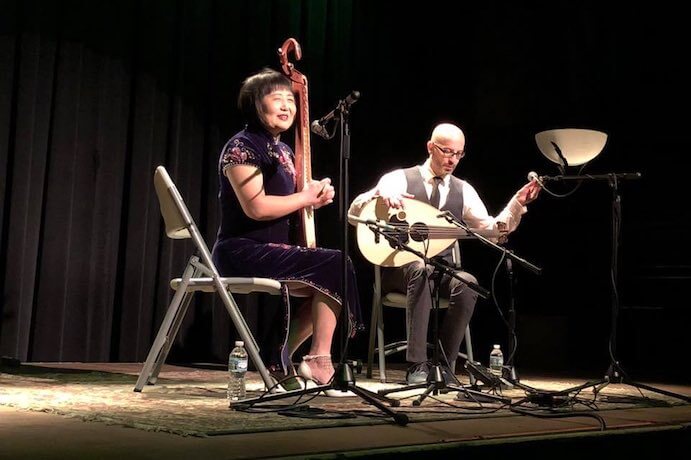


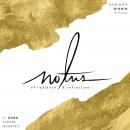
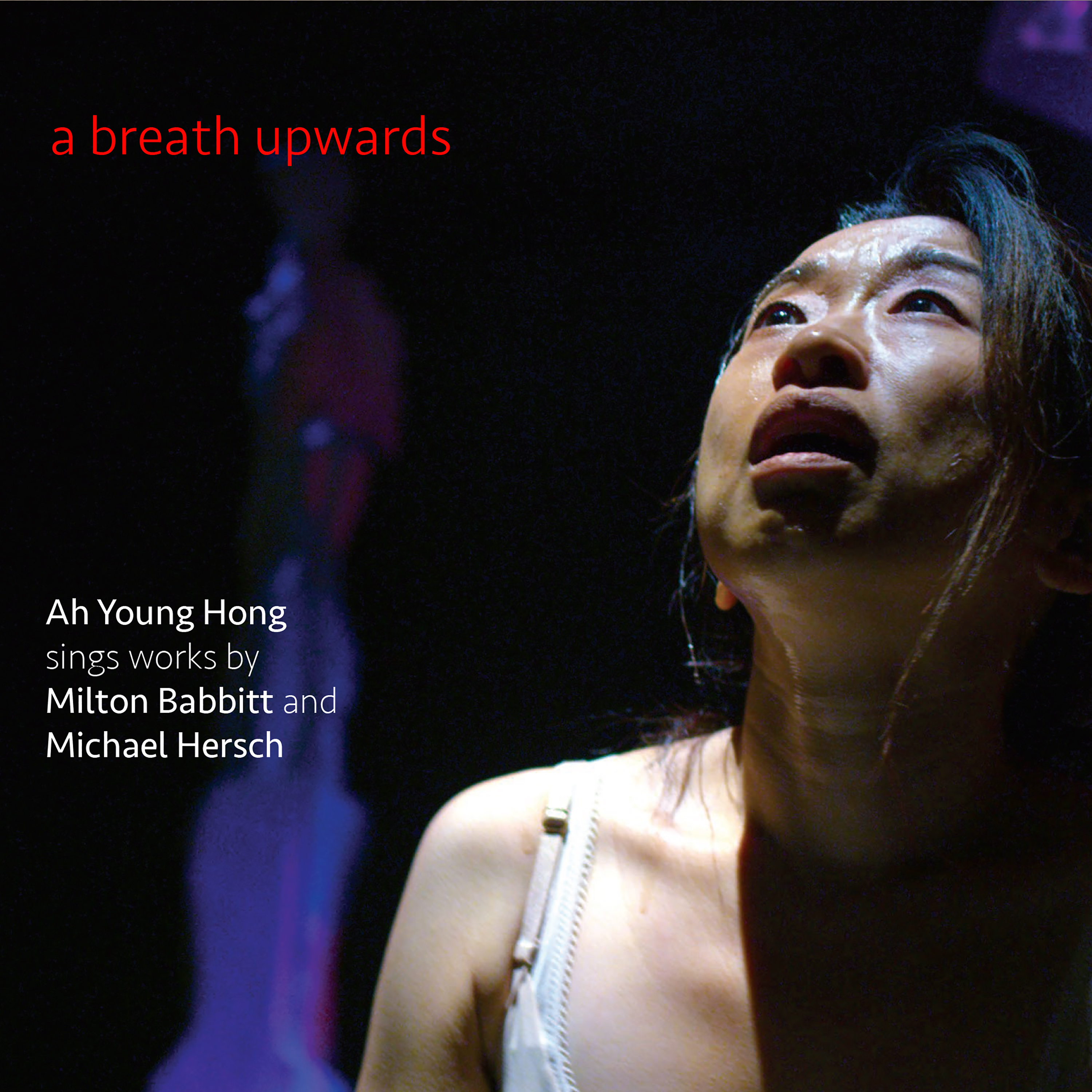








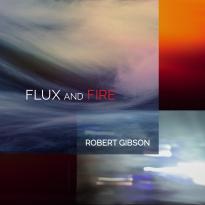

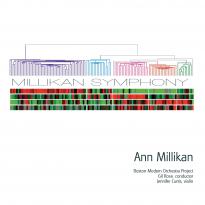




Reply